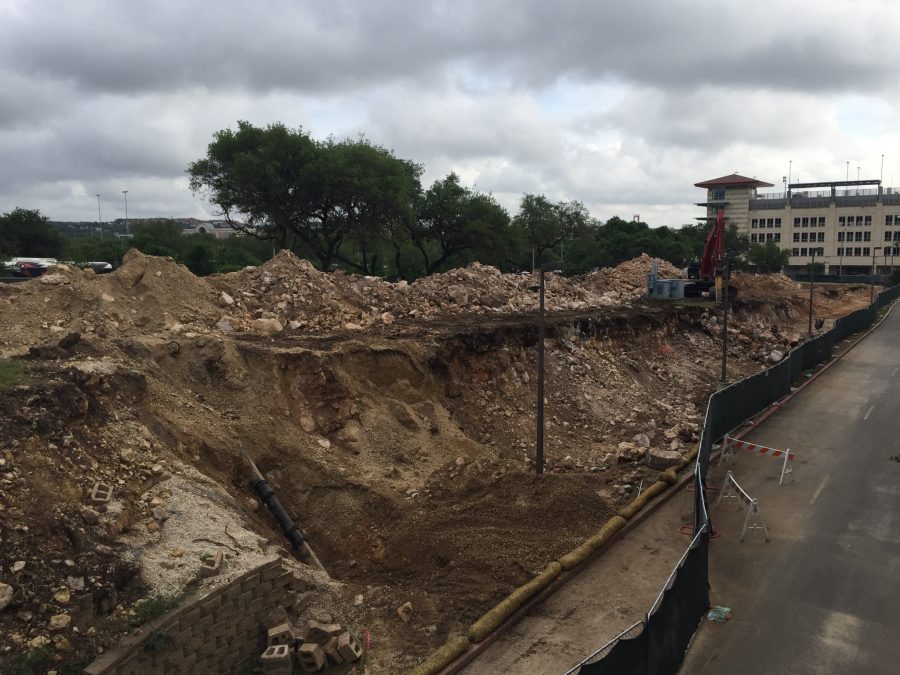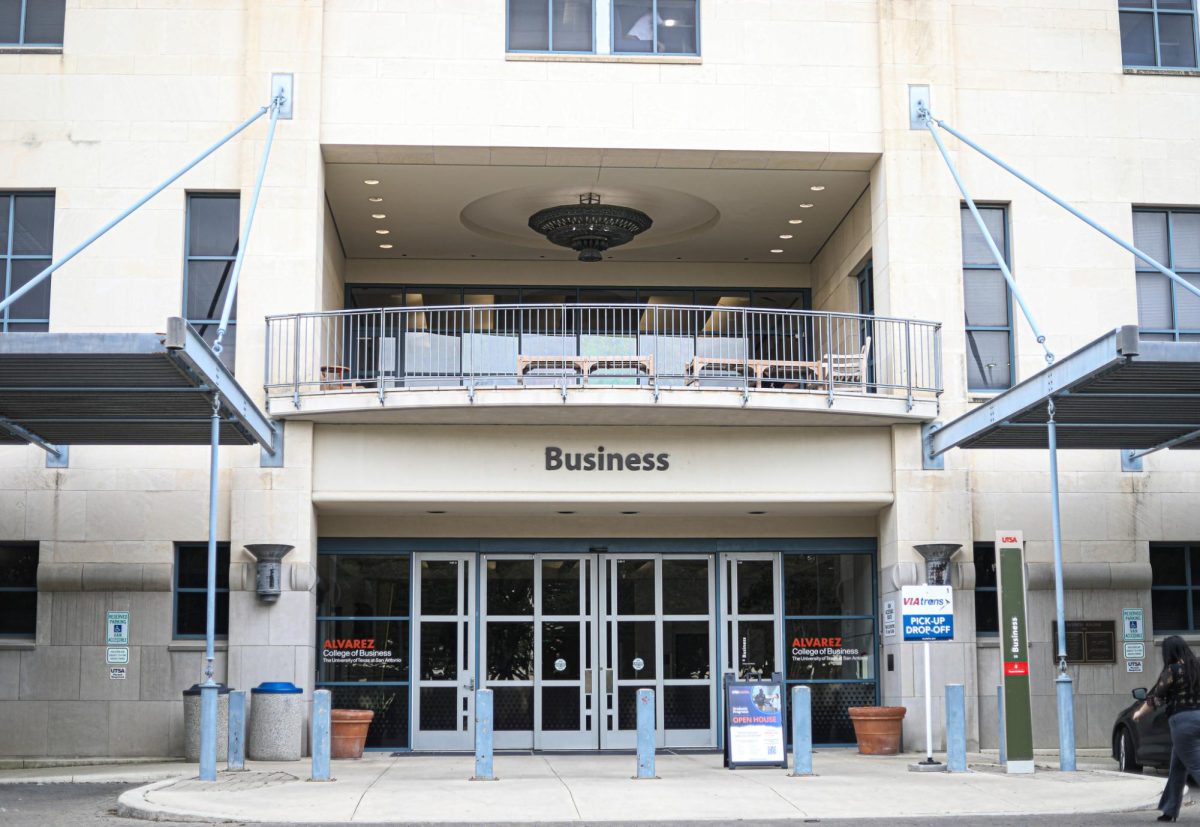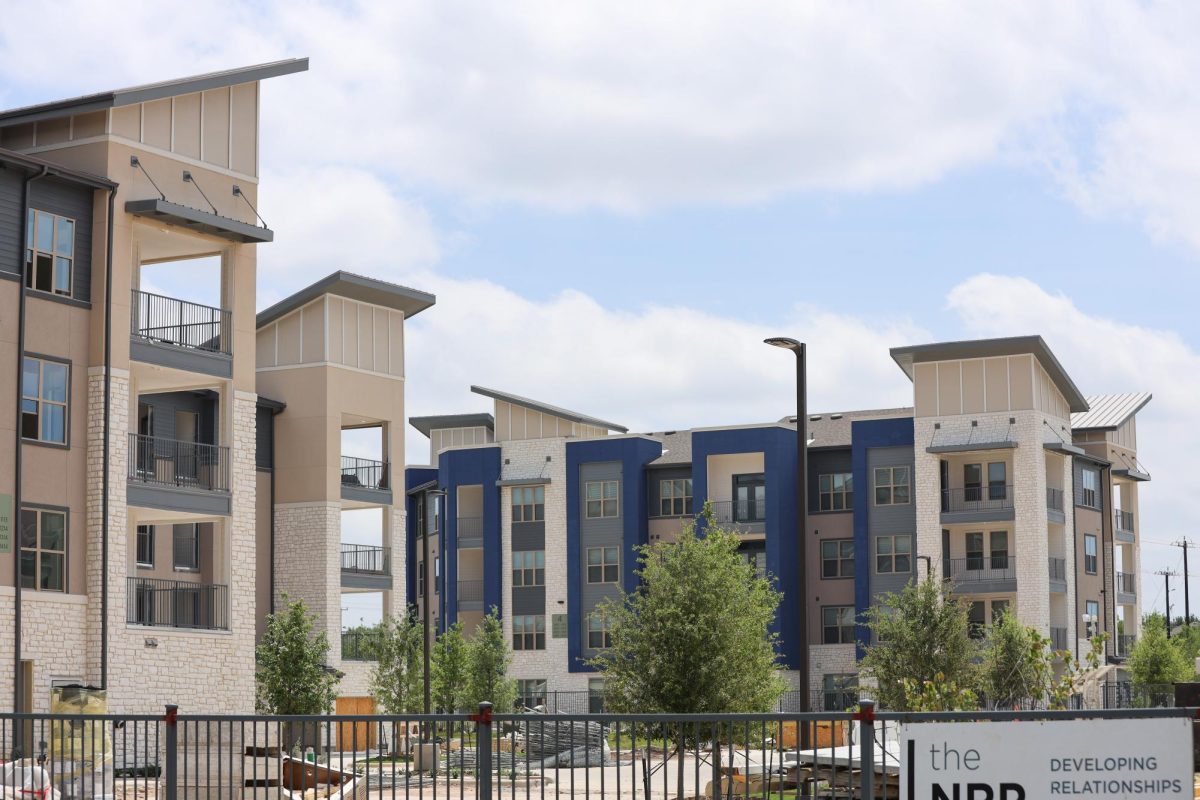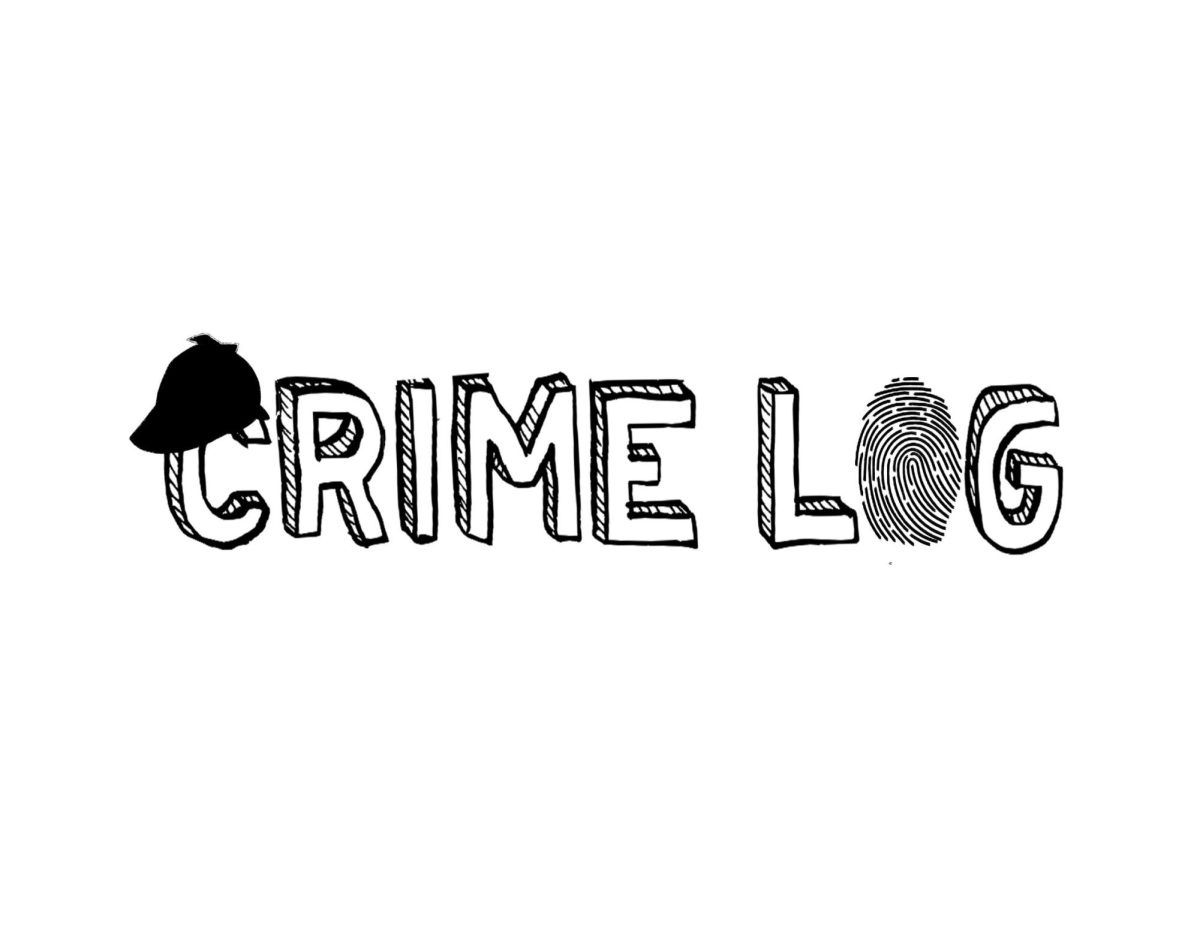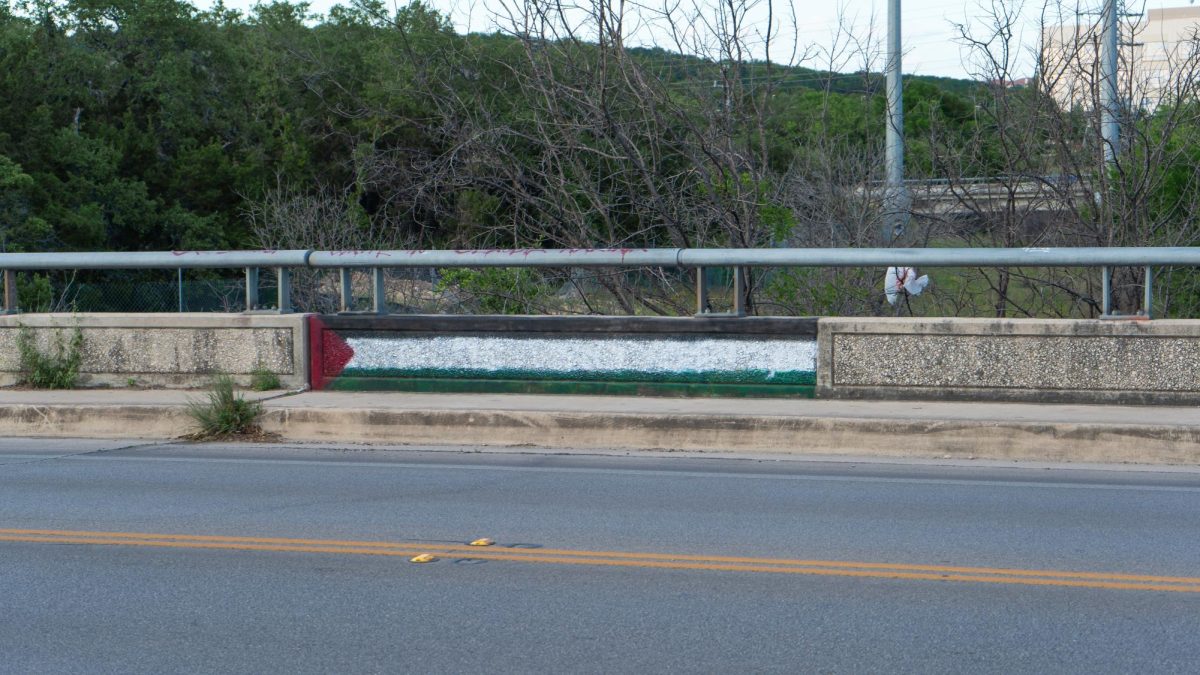The construction of the Resident Lot 4 and the Devine Ave lot north of the Business Building has progressed rapidly and is projected to be complete by the Fall 2017 semester. The changes to campus are geared to alleviate parking concerns; however, some community members would have preferred a more sustainable approach.
“The fact is, this campus has limited natural green space near the center of campus. It isn’t just about the number of trees, although trees certainly are beneficial,” Nathaniel Dowell, senior multidisciplinary major, said.
According to Dowell, some of the limited green spaces on campus serve as “living classrooms,” and the open space near the Business Building was one of these places.
Dowell said in addition to the scrub live oaks that were bulldozed, he collected Texas bluebonnets, prairie celestials and other less common species at the site during his biology of flowering plants course.
Each spring, Professor Stephanie Gdovin teaches biology of flowering plants. In the course, students learn the characteristics of over 40 herbaceous plant families and how to identify native, herbaceous species in the field. Most of the course’s fieldwork occurs near or on-campus.
“Historically the MH and BB experienced less mowing, and many beautiful species could be relied upon to make an appearance year after year,” Gdovin said. “With the destruction of this habitat and construction of the new parking lot, our little slice of heaven on campus is gone forever.”
The construction of the two new parking lots follows the UTSA Master Plan. The plan serves as a blueprint for growth at both the Main and Downtown academic campuses and for an athletics and recreational complex at UTSA Park West. The plan was originally approved by the UT System Board of Regents in 2009 and was last updated in 2014.
“The new parking spaces are going to be a great thing for UTSA. As the university has been growing, the parking situation has gotten worse,” John Paiz, public administration graduate student, said. “These new spaces will help relieve that and make the campus experience stress free.”
The new Resident Lot 4 will create approximately 275 new resident spaces for students with Resident “H”. “H” permits cost $240. The Devine Ave. Lot will add about 125 new Reserved, Employee A and disabled spaces. These spaces don’t serve students who commute but UTSA will reallocate parking across campus. Resident spaces in Barshop Lot 1 and Barshop Lot 2 (formerly Resident Lot 4) will be assigned to commuters, providing approximately 100 additional spaces.
Planning and Development (P&D) is responsible for all facility planning and development efforts for the institution. This includes development, management and updating of the Campus Master Plan.
Benjamin Perry, director of facilities planning and development, explained the university’s increase in development takes place at the core of the campus to avoid sprawl development. Sprawl refers to expansion to low density areas instead of concentrated growth.
“We feel with that focus, the trees, wildlife, flora and fauna are preserved because we are concentrating the development where the students are and not on the outlining natural undisturbed areas that are not dense,” Perry explained. “What’s in the core of campus is very planned. It’s not just left in its complete natural state because as we develop we have to plan out everything.”
“The main point is, this is a university and one of the primary reasons the university is here is for education and research and for that to happen you have to have the buildings and infrastructure,” Perry said.
Established in 2010 the Sustainability Council enhances university efforts to support a “green” environment.
“The sustainability chair, Keith Muhlestein is a point of contact for us in the Green Society and the Sustainability Council,” Julia Shank, former vice president and current member of the Green Society, said.
The Sustainability Council advises the president, provost and other senior administrators regarding strategies for enhancing the university’s sustainability performance.
“Many students are involved in addressing environmental issues on campus and in the south Texas community,” Melissa May, director of communication for business affairs and member of the Sustainability Council, said. “As are many others in the Facilities Departments, Sustainability Council and the Office of Environmental Health, Safety and Risk Management (EHSRM)…and throughout the university.”
Shank sits on the Sustainability Council with Muhlestein, May and Perry. She echoed Gdovin’s concerns about the diminishing green space.
“Both organizations are upset about this, and we are worried our voices aren’t getting heard. We are brainstorming for more ideas on what we should do,” Shank said. “These natural areas are a place for students to study and relax. The space recently destroyed was considered my classroom. My classroom got taken away via parking lot.”
According to Perry, UTSA does not have a formal Preservation and Mitigation Plan but the P&D does have Director Muhlestein on the staff developing a plan.
UTSA is a recognized Wildlife Habitat by the National Wildlife Federation and has recently set aside more than six acres as a butterfly habitat.






